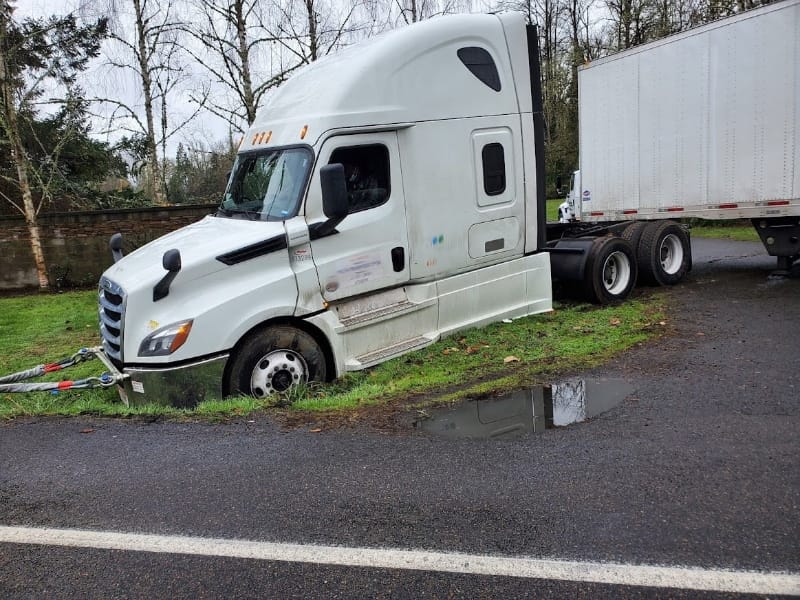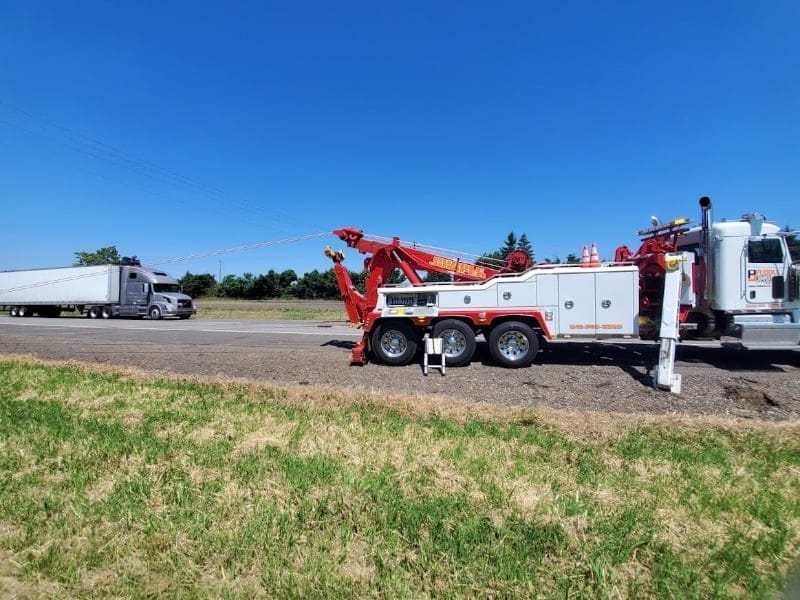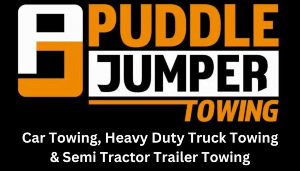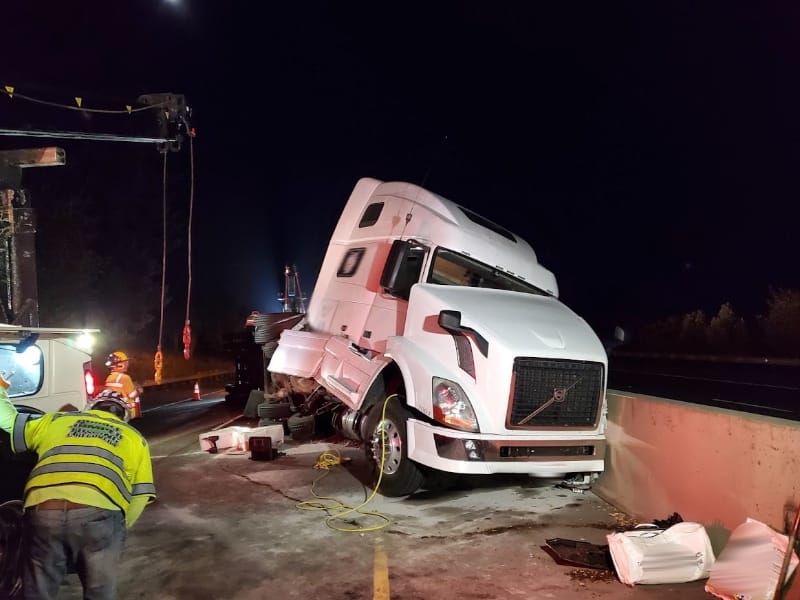When Good Loads Go Sideways
Every time we respond to a rollover, we see the same thing: one miscalculation, one curve too fast, one brake tap in the wrong place, and a fully loaded rig is lying on its side. These aren’t just rookie mistakes. Even experienced drivers can find themselves upside down if the road, load, or momentum turns against them. In those cases, our I-5 heavy recovery team saves the day.
Most drivers think of rollovers as rare or freak incidents. But on long stretches, with sudden weather shifts, crowded lanes, and sharp interchanges, the risk climbs fast. And when a rig goes over, it isn’t just the driver’s load at stake. It’s traffic, timelines, and safety for everyone nearby.

Shifting Loads Can Throw You in Seconds
Even a properly packed trailer can betray you when the load shifts mid-turn. That’s especially true with tankers, partial loads, or double-stacked freight.
As the truck takes a curve, centrifugal force pulls the trailer outward. If the load isn’t balanced or secured well, it begins to lean. That lean builds quickly and pushes the trailer past the point of no return. From the cab, the rollover can feel almost instant.
We’ve recovered enough of these to know the pattern. We can usually spot where the load moved and how that motion triggered the roll. Drivers often say the same thing after it happens: they didn’t see it coming.
Off-Ramps and On-Ramps Are Hidden Traps
Most rollovers we recover happen in places drivers pass through every day, especially ramps.
On-ramps and off-ramps might look simple, but they combine tight curves with unpredictable traction and quick changes in elevation. A loaded trailer might not handle the same way today as it did yesterday. And even a few extra miles per hour through a ramp can cause the center of gravity to shift too far. Even when tires never lost contact, the trailer just leaned too far and pulled the rest of the truck with it. The faster the ramp, the less margin drivers get.
Road Crowding and Sudden Moves
Crowded lanes make it hard to leave room for error. When traffic tightens up, drivers have to brake harder, steer quicker, or take wider turns in less space. That’s when rollovers happen.
We see it in construction zones, near interchanges, or during rush hour around cities. A sudden swerve or an overcorrection is all it takes. Once the trailer’s center of gravity tips beyond its base, the trailer leads and the tractor follows.
Drivers know how fast traffic can box them in. But most don’t realize that a sudden steering correction has the same rollover risk as a tight turn. And in a top-heavy load, the trailer doesn’t forgive the angle.

Tractor-Trailer Rollover Frequently Asked Questions
What causes most semi-truck rollovers on highways like I-5?
A: Sudden steering changes, shifting loads, tight ramps, and unpredictable traction are the most common rollover triggers — even for experienced drivers.
Can a load shift really flip a fully loaded trailer?
A: Yes. When weight shifts during a curve or correction, the center of gravity can move too far and cause the trailer to lean past its balance point.
Why do so many rollovers happen on ramps?
A: On-ramps and off-ramps combine curves, changing elevation, and reduced traction. Just a few extra MPH can push a loaded trailer past safe stability.
How fast can an I-5 heavy recovery clear a rollover?
A: Timing depends on vehicle position, load type, and access, but trained heavy recovery crews work quickly to minimize lane closures and delays.
Do you handle hazardous or partial loads in rollover recoveries?
A: Yes. We assess the cargo immediately and use proper equipment to stabilize, lift, and secure freight — whether it’s tankers, stacked pallets, or mixed loads.
What equipment is used in heavy truck rollover recovery?
A: Rotators, recovery straps, cribbing, and controlled lift techniques allow safe uprighting without adding damage to the tractor or trailer.
Do you provide 24/7 heavy recovery services on I-5?
A: Yes. Puddle Jumper responds day and night to rollover incidents, blocked lanes, and emergency heavy vehicle recoveries along the I-5 corridor.
What Puddle Jumper Brings to I-5 Heavy Recovery Scenes
When a tractor trailer goes over, every minute counts in the I-5 heavy recovery effort that follows. Lane closures stack up fast, and our I-5 heavy recovery team has to move quickly without adding damage or danger. That’s why we stay ready to roll at a moment’s notice.
We bring in the right rigs, use recovery straps, rotators, and cribbing blocks, and coordinate with law enforcement when needed in the I-5 heavy recovery effort. Our goal is to stabilize the trailer, lift it safely, and clear the scene without cutting corners or risking more problems down the road.
Every I-5 heavy recovery has its own variables: slope, load weight, damage, and vehicle position. Our I-5 heavy recovery team plans before we pull, because guessing doesn’t cut it in heavy recovery. We’ve done this enough times to know what works.

